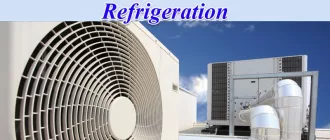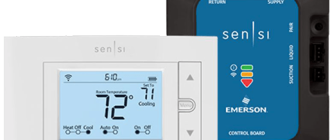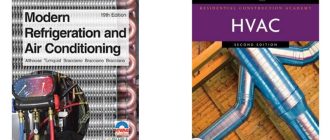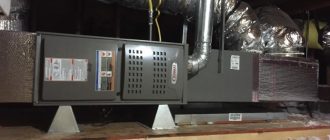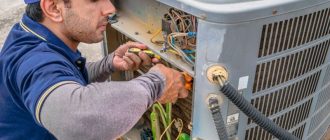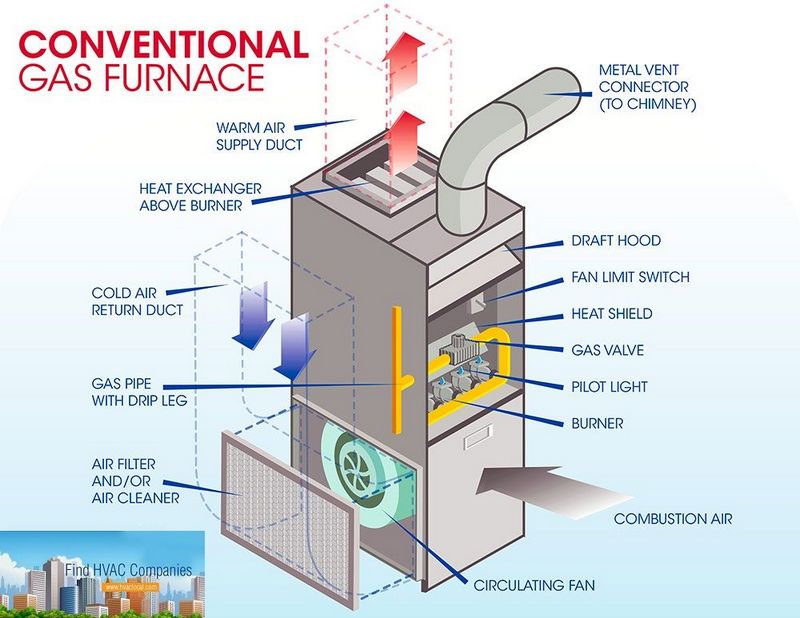
How Does a Furnace Work?
When the chilly months arrive, furnaces become our trusty companions in keeping our homes warm and cozy. But have you ever wondered how these ubiquitous heating systems actually work? In this article, we will delve into the mechanics of furnace operations to get a better understanding of their inner workings.
At the heart of a furnace lies an essential component known as the combustion chamber. Here, the magic happens as a filter separates dust and other debris from the incoming air. The filtered air then combines with a controlled amount of fuel, such as gas or oil, creating a mixture ready for ignition.
Ignition is sparked by an electronic or pilot light, which sets off the heating process. Once ignited, the fuel-air combination produces a controlled flame, generating the heat needed to warm your home. This flame continues to burn until the thermostat senses that the desired temperature has been reached.
Efficient distribution of the heat produced by the flame is another vital function of the furnace. Through an intricate network of ductwork, the heated air travels throughout your home. This ductwork connects to vents in each room, ensuring that warm air is evenly distributed in every corner of your house.
Assisting in the distribution process is a blower, which pushes the warm air through the ductwork. This blower also plays a role in circulating air for ventilation, helping to improve indoor air quality by removing stale air and introducing fresh air from outside. To further enhance air quality, a filter traps dust, pollen, and other contaminants that may be present in the air.
Once the desired temperature is reached, the furnace will cycle off, and the blower will continue running for a short amount of time to utilize the remaining heat in the system. As the temperature drops, the thermostat senses the change and signals the furnace to reignite, starting the heating process once again.
In conclusion, furnaces work by combining fuel and air in a controlled combustion process, generating heat that is distributed throughout your home via ductwork and a blower. By understanding the mechanics behind how furnaces operate, you can ensure that your heating system functions effectively and keeps you warm during those cold winter months.
Understanding the Mechanics of Furnace Operations
In order to understand how a furnace works, it is important to familiarize yourself with the key components and processes involved in its operation.
One crucial element of a furnace is the ductwork, which is responsible for distributing the heated air throughout the house. The ductwork consists of a network of pipes or channels that connect the furnace to different rooms, ensuring that the heat reaches every corner of the house.
The heating process begins with the ignition of the furnace. When the thermostat detects that the temperature in the house is below the set point, it sends a signal to the furnace to start heating. The ignition mechanism, often a pilot light or an electric igniter, then ignites the fuel, which can be natural gas, oil, or propane, and creates a flame within the furnace.
Once the fuel is ignited, the furnace starts to generate heat. This heat is used to warm up the air that passes through the furnace. The air, which is drawn into the furnace through a filter, is forced to pass over the heat exchanger. The heat exchanger absorbs the heat from the flame and transfers it to the air, warming it up.
The warmed air is then blown out of the furnace and into the ductwork by a blower. The blower is a powerful fan that creates a flow of air, pushing it through the system and into the various rooms of the house. As the heated air travels through the ducts, it warms up the surrounding areas, providing the desired level of comfort.
After the heated air has been distributed, the furnace also needs a way to remove the byproducts of combustion. This is done through an exhaust system. The exhaust carries away the gases produced during the combustion process, such as carbon monoxide, and releases them safely outside the house.
Throughout the heating cycle, the furnace continuously monitors and adjusts the temperature in the house based on the settings specified by the thermostat. When the desired temperature is reached, the furnace shuts off, conserving energy and maintaining a comfortable environment.
Understanding the mechanics of furnace operations can help homeowners appreciate the complex processes involved in keeping their homes warm and comfortable. By ensuring proper maintenance and regular inspection, homeowners can maximize the efficiency and lifespan of their furnace.
Definition and Purpose of Furnace
A furnace is a mechanical device used for heating spaces and circulating warm air. It is a crucial component of heating systems in homes and commercial buildings. The main purpose of a furnace is to provide warmth by generating heat and distributing it throughout the building.
The furnace operates by igniting a fuel source, such as natural gas or oil, in a combustion chamber. This combustion process produces heat, which is then transferred to the surrounding air. The heated air is then circulated through a series of ductwork and vents, allowing it to reach every room or area in the building.
In addition to providing heat, furnaces also have other important features. They typically have an exhaust system to safely remove any combustion byproducts, such as carbon monoxide, from the building. Furnaces also have an air filter to remove dust, allergens, and other particles from the air before it is heated and distributed.
Furthermore, furnaces are equipped with a thermostat, which allows users to control the desired temperature in the building. The thermostat detects the current temperature and signals the furnace to turn on or off to maintain the set temperature. This helps ensure comfort and energy efficiency.
Another essential component of a furnace is the blower or fan. The blower helps circulate the heated air through the ductwork and vents, ensuring even distribution of warmth throughout the building. Without the blower, the heated air would remain stagnant, leading to uneven heating and discomfort.
Components of a Furnace
A furnace is a complex system with various components that work together to provide heating to a space. Understanding the different components of a furnace can help you better comprehend how the system functions.
- Ductwork: Ductwork is a network of pipes or channels that distribute heated air throughout a building, ensuring equal distribution of warmth.
- Blower: The blower is responsible for moving air across the heat exchanger, which then distributes the heated air through the ductwork into the different rooms.
- Ignition: The ignition system ignites the fuel in the combustion chamber, which produces the heat necessary for heating the air.
- Filter: The filter helps to clean the air by trapping dust, debris, and other particles, preventing them from circulating throughout the space.
- Combustion Chamber: The combustion chamber is where the fuel and air combine, creating a controlled combustion process to generate heat.
- Air Exhaust: The air exhaust is responsible for removing combustion gases and byproducts from the furnace and expelling them safely outside the building.
- Thermostat: The thermostat serves as the control center of the furnace, allowing you to set the desired temperature and regulating the operation of the furnace based on the temperature readings.
Each component plays a crucial role in the overall functioning of the furnace, ensuring efficient and effective heating for your space.
Types of Furnaces
There are various types of furnaces used for heating homes and buildings. These furnaces operate by circulating hot air, expelling exhaust gases, and distributing heat through ductwork.
1. Combustion Furnaces: These furnaces use combustion to generate heat. They typically have a burner that ignites a mixture of gas or oil and air. The ignited fuel releases heat, which is then transferred to the air passing through the furnace.
2. Electric Furnaces: Electric furnaces do not rely on combustion. Instead, they use electric heating elements to produce heat. When electricity passes through these elements, they become hot, heating up the surrounding air.
3. Heat Pump Furnaces: Heat pump furnaces use a different mechanism to generate heat. They extract heat from the outdoor air or the ground and transfer it indoors. This process involves compressing and expanding a refrigerant, which absorbs and releases heat in the process.
4. Modulating Furnaces: Modulating furnaces are designed to provide more precise temperature control. They can adjust the heat output in small increments based on the demand detected by a thermostat. This allows for more efficient heating and improved comfort.
Note: All types of furnaces should have filters installed to trap dust, allergens, and other particles in the air. Filters help maintain better indoor air quality and prolong the lifespan of the furnace.
In summary, the different types of furnaces, whether combustion, electric, heat pump, or modulating, all work to deliver heating by either generating heat through combustion or using other mechanisms to extract and distribute heat. Regardless of the type, regular maintenance and filter replacement are crucial to ensure the furnace operates efficiently and provides clean, warmed air.
Heat Transfer in Furnaces
In furnace operations, heat transfer plays a crucial role in ensuring efficient and effective heating processes. Heat transfer refers to the movement of thermal energy from a heat source to the surrounding areas.
One of the primary mechanisms of heat transfer in furnaces is through exhaust gases. During combustion, fuel is ignited to produce heat, and the resulting gases are expelled through the exhaust system. The hot exhaust gases carry a significant amount of thermal energy, which can be harnessed to heat the air that circulates throughout the furnace.
Air, an essential component in any combustion process, is another medium through which heat is transferred in furnaces. The blower in the furnace forces air into the combustion chamber, where it mixes with the fuel and supports ignition. As combustion occurs, the heated air absorbs thermal energy and becomes a carrier of heat within the furnace system.
The heated air is then circulated throughout the furnace using a network of ductwork. This ductwork acts as a pathway to deliver the heated air to different areas of the building or space being heated. As the hot air moves through the ductwork, it transfers heat to the surrounding surfaces, such as walls, floors, and objects in the vicinity.
Another factor that affects heat transfer in furnaces is the presence of a filter. A filter is typically installed in the furnace to remove impurities and contaminants from the air before it enters the combustion chamber. By ensuring clean air, the filter helps to maintain the efficiency of heat transfer by preventing the buildup of debris and obstructions that could hinder the flow of air and heat.
Understanding the mechanics of heat transfer in furnaces is crucial for optimizing their performance and energy efficiency. By considering factors such as exhaust gases, combustion, ignition, air, blower, heating, ductwork, and filter, manufacturers and technicians can design and maintain furnaces that effectively and efficiently transfer heat to provide comfortable and controlled heating in residential and commercial spaces.
Combustion Process in Furnaces
The combustion process is the heart of a furnace’s operation. It is the process by which fuel is burned to produce heat. Furnaces typically burn natural gas, oil, or propane to generate heat.
The first step in the combustion process is the ignition of the fuel. This is usually done by an ignition system, which produces a spark or flame to ignite the fuel. Once ignited, the fuel burns and releases heat.
Air is an essential component of the combustion process. Furnaces draw in air from the surrounding environment and mix it with the fuel to create a combustible mixture. This is usually done using a blower, which forces air into the combustion chamber.
Before being drawn into the combustion chamber, the air typically passes through a filter. The filter removes dust, dirt, and other contaminants from the air, ensuring that only clean air enters the combustion process.
Once the air and fuel are mixed in the combustion chamber, they are ignited, and the combustion process begins. The flame produced by the ignition of the fuel heats up the air, creating hot gases that flow through the heating system’s ductwork.
The thermostat, a device that senses the temperature in a room, controls the combustion process. When the thermostat detects that the temperature in the room is below the desired level, it signals the furnace to start the combustion process. Once the desired temperature is reached, the thermostat signals the furnace to stop the combustion process.
During the combustion process, the fuel is completely burned and converted into heat energy. The hot gases produced by the combustion process are then directed to the exhaust system, where they are safely vented out of the building.
The combustion process is the key to a furnace’s ability to provide heating. Understanding how this process works is essential for anyone wishing to maintain and troubleshoot furnace systems effectively.
Fuel Selection for Furnaces
When it comes to operating a furnace, one of the most important considerations is the choice of fuel. The fuel selected for a furnace can have a significant impact on its performance, efficiency, and environmental impact.
Blower: The blower is responsible for circulating the heated air throughout the home. It is important to choose a fuel that can provide enough heat to effectively warm the air and allow the blower to distribute it efficiently.
Ignition: The ignition system of a furnace is crucial for starting the heating process. Different fuel types require different ignition systems, so it is important to select a fuel that is compatible with the furnace’s ignition system.
Thermostat: The thermostat controls the temperature of the furnace. Some fuels may have specific temperature requirements, so it is important to choose a fuel that is compatible with the thermostat and can provide the desired heating levels.
Exhaust: The exhaust system of a furnace is responsible for removing combustion byproducts and ensuring the safe operation of the unit. It is essential to select a fuel that produces minimal emissions and can be safely exhausted from the home.
Heating: The fuel selection will directly impact the heating capabilities of the furnace. Some fuels may provide more efficient and effective heating than others, so it is important to consider the specific heating needs of the home.
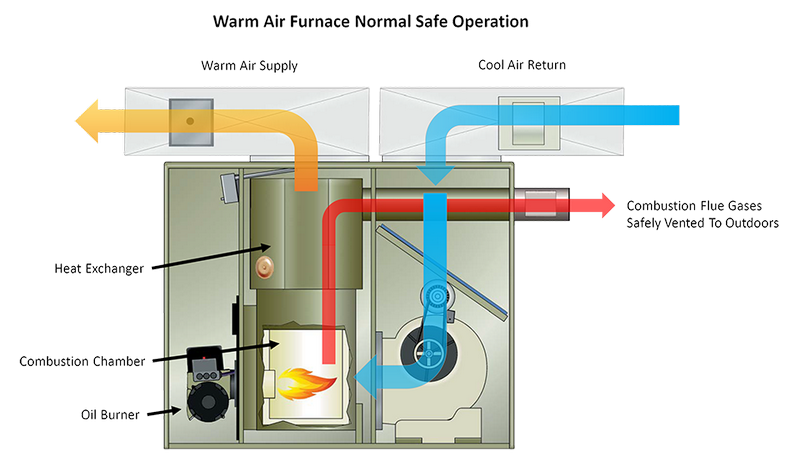
Filter: The fuel selection can also affect the cleanliness of the air in the home. Certain fuels may produce more pollutants, so it is important to choose a fuel that can be filtered effectively to maintain indoor air quality.
Ductwork: The fuel selection should also take into account the compatibility with the existing ductwork system. Different fuels may require specific adjustments or modifications to the ductwork to ensure proper airflow and heating distribution.
Air: The fuel selection can impact the overall air quality in the home. Some fuels may produce odors or fumes that can be unpleasant or harmful, so it is important to choose a fuel that is clean-burning and safe for indoor air quality.
In conclusion, when selecting a fuel for a furnace, it is important to consider factors such as the blower, ignition system, thermostat, exhaust, heating capabilities, filter requirements, compatibility with ductwork, and impact on indoor air quality.
Air Supply and Ventilation in Furnaces
Air supply and ventilation are crucial elements in the operation of a furnace. Without proper air circulation, heating would not be possible.
The primary source of air in a furnace is the blower. This powerful fan pulls in cool air from the surrounding environment and directs it into the heating system. Before entering the furnace, the air usually passes through a filter, which helps remove dust, debris, and other contaminants.
Once inside the furnace, the air moves through a series of ductwork, which acts as a network of passages that distribute the heated air to different areas of the building. The ductwork is usually made of metal and is carefully designed to ensure even airflow and heat distribution.
At some point in the furnace system, the air encounters the ignition mechanism. This can be a pilot light or an electric igniter, which ignites the fuel source, commonly natural gas or propane. The ignited fuel generates heat, which warms up the air passing through the furnace.
After being heated, the air is pushed out of the furnace through an exhaust vent. This vent serves two purposes: it removes combustion byproducts and expels the hot air produced during the heating process.
The amount of air flow and temperature in the furnace is regulated by a thermostat. The thermostat senses the temperature in the building and sends signals to the furnace to adjust the heating accordingly. For example, if the building is too cold, the thermostat will activate the furnace to produce more heat. Once the desired temperature is reached, the thermostat will signal the furnace to shut off.
In conclusion, air supply and ventilation play a critical role in the proper operation of a furnace. The blower, filter, ductwork, ignition mechanism, exhaust vent, and thermostat all work together to ensure effective heating and air circulation in a building.
Control Systems in Furnaces
Control systems play a crucial role in the efficient operation of furnaces. These systems are responsible for regulating various aspects, including airflow, temperature, and combustion, to ensure optimal performance and safety.
One important component of the control system is the filter, which helps remove dust and debris from the air before it enters the furnace. This helps maintain clean air quality and prevents damage to the furnace components.
The combustion control system is responsible for managing the ignition and combustion process. It ensures the right amount of fuel is supplied and monitors the flame to maintain a steady and efficient burn.
The thermostat is another critical component of the control system. It senses the temperature in the space being heated and communicates with the furnace to regulate the heat output. This allows for precise temperature control and energy efficiency.
The control system also includes a blower, which is responsible for circulating air throughout the ductwork. It helps distribute heat evenly and improve overall comfort.
Exhaust control is another crucial aspect of furnace operation. The control system monitors and regulates the operation of the exhaust fan to maintain proper ventilation and remove combustion by-products.
In summary, control systems in furnaces are essential for regulating airflow, temperature, combustion, and ventilation. These systems work together to ensure optimal efficiency and safety, making them integral to the overall operation of a furnace.
Efficiency and Performance of Furnaces
Furnaces play a crucial role in heating our homes and buildings. Understanding the efficiency and performance of furnaces is important when it comes to ensuring comfort and reducing energy costs.
The efficiency of a furnace is measured by its ability to convert fuel into heat. Higher efficiency furnaces can convert a larger percentage of fuel into usable heat, resulting in lower energy consumption and reduced heating costs.
One key component that affects the efficiency and performance of a furnace is the air blower. The blower circulates the heated air throughout the ductwork and into the living spaces. A properly functioning blower ensures even distribution of heat, maximizing the furnace’s efficiency.
The thermostat also plays a vital role in the efficiency of a furnace. It controls the temperature and signals the furnace to turn on or off based on the desired temperature setting. An accurate and well-calibrated thermostat ensures that the furnace operates at the most efficient levels, preventing unnecessary energy consumption.
The ignition system of a furnace is another important factor in its performance. Efficient ignition systems quickly and reliably ignite the fuel, leading to immediate heat production and optimal furnace performance.
Furnaces with well-designed and maintained ductwork also contribute to efficiency. Properly sealed and insulated ductwork prevents heat loss during distribution, ensuring that the maximum amount of heated air reaches the living spaces.
Regular filter maintenance is crucial for the efficiency and performance of furnaces. Clean filters allow for unrestricted air flow and prevent dust and debris from clogging the system. This not only enhances the furnace’s efficiency but also improves indoor air quality.
Lastly, the proper installation and maintenance of the exhaust system is important for the efficiency and safety of the furnace. A well-functioning exhaust system removes combustion byproducts and ensures that the furnace operates at its peak performance.
By understanding and optimizing these various components and factors, homeowners can ensure that their furnaces operate efficiently, providing optimal heating comfort while minimizing energy costs.
Common Operating Problems in Furnaces
Operating problems can occur in furnaces due to various reasons. Here are some common issues that homeowners may encounter:
- Combustion Problems: If the furnace is not properly combusting fuel, it can result in poor heating performance or even a complete shutdown. This can be caused by issues such as a clogged burner or a faulty ignition system.
- Ignition Problems: Furnaces rely on a functioning ignition system to start the combustion process. If the ignition system fails, the furnace may not ignite, leaving you without heating. Common causes of ignition problems include a malfunctioning pilot light or a faulty electronic ignition system.
- Exhaust Problems: The exhaust system is responsible for safely venting the combustion gases produced by the furnace. If there is a problem with the exhaust system, such as a blocked flue or a damaged vent pipe, it can create a dangerous situation by allowing carbon monoxide to build up in your home.
- Thermostat Problems: The thermostat is the control center of the furnace. If the thermostat is not functioning correctly, it can lead to issues such as inconsistent heating, a furnace that won’t turn on or off, or a furnace that cycles on and off too frequently. Common thermostat problems include a faulty temperature sensor or a malfunctioning control board.
- Air Flow Problems: Proper air flow is essential for efficient heating. If there are obstructions in the ductwork or a clogged air filter, it can restrict the flow of air, causing the furnace to work harder and potentially overheat. Regularly changing the air filter and keeping the air vents clear can help prevent air flow problems.
- Heating Element Problems: Electric furnaces use heating elements to generate heat. If a heating element becomes damaged or fails, the furnace may not produce enough heat or may not work at all. Common causes of heating element problems include electrical malfunctions or wear and tear over time.
It’s important to address these operating problems as soon as possible to ensure your furnace operates safely and efficiently. Regular maintenance and inspections by a qualified HVAC technician can help prevent these problems and keep your furnace running smoothly.
Safety Measures for Furnace Operations
When it comes to operating a furnace, there are several important safety measures to keep in mind. The combustion process that occurs within a furnace can produce harmful gases, so it is crucial to ensure proper ventilation. Make sure that the blower is functioning effectively to circulate the air and exhaust the combustion byproducts safely.
Regular maintenance of the furnace is essential to prevent any potential safety hazards. It is important to check and clean the ductwork and filters regularly to prevent dust and debris buildup. A clogged filter can restrict airflow and potentially lead to overheating, damaging the furnace or causing a fire.
Furthermore, be cautious when it comes to ignition. Improper ignition can lead to gas leaks, which can be highly dangerous. Always follow the manufacturer’s instructions for ignition procedures, and if you smell gas, turn off the furnace immediately and contact a professional for assistance.
It is also important to keep flammable materials away from the furnace to prevent any accidental fires. Additionally, ensure that the furnace is installed in a well-ventilated area, and that there are no obstructions blocking the air intake or exhaust vents.
Lastly, it is crucial to have proper smoke and carbon monoxide detectors installed near the furnace and throughout your home. These detectors can alert you to potential safety hazards and provide early warning signs of any combustion-related issues.
By adhering to these safety measures, you can ensure the safe and efficient operation of your furnace, minimizing the risk of accidents or hazards.
Environmental Impact of Furnaces
As important as furnaces are in providing heating for homes and buildings, it’s essential to understand their environmental impact. Furnaces can have several environmental consequences, including air pollution and energy consumption.
One aspect of furnace operation that can impact the environment is the combustion process. Furnaces typically burn fuel, such as natural gas or oil, to generate heat. The combustion of these fuels releases carbon dioxide (CO2) and other greenhouse gases into the air, contributing to climate change.
Additionally, furnaces can produce pollutants such as nitrogen oxides (NOx), sulfur dioxide (SO2), and particulate matter (PM). These pollutants can have detrimental effects on air quality and human health. They can contribute to the formation of smog, respiratory issues, and other respiratory illnesses.
Another factor to consider is the energy efficiency of furnaces. Older furnaces tend to be less efficient, leading to more energy consumption and higher greenhouse gas emissions. However, newer furnaces are designed to be more energy-efficient, with features such as high AFUE (Annual Fuel Utilization Efficiency) ratings and advanced heat exchangers. Regular maintenance, including cleaning the ductwork and changing the air filter, can also improve furnace efficiency and reduce its environmental impact.
Furthermore, the blower and exhaust fans in furnaces consume electricity. While the electricity consumption of furnaces is relatively small compared to other appliances, it still adds to overall energy usage. Opting for energy-efficient blowers and motors can help reduce the environmental footprint of furnace operation.
In summary, furnaces can have an environmental impact through air pollution and energy consumption. Understanding the factors that influence their impact, such as combustion, efficiency, and electricity usage, can help homeowners and building managers make informed decisions to mitigate these effects. Regular furnace maintenance, including proper combustion, filtration, and ventilation, can go a long way in reducing the environmental impact of heating systems.
Q&A:
How does a furnace work?
A furnace works by heating up air or water using a fuel source, such as gas, oil, or electricity. The fuel is burned in a combustion chamber, creating flames that heat up a heat exchanger. The heat exchanger transfers the heat to the air or water, which is then circulated throughout the building via ductwork or pipes.
What is the purpose of a heat exchanger in a furnace?
The heat exchanger in a furnace is responsible for transferring the heat from the combustion chamber to the air or water. It is a metal component with a large surface area that allows for efficient heat transfer. The combustion gases flow through the heat exchanger, while the air or water passes over the outside of it, absorbing the heat.
What are the common fuel sources for furnaces?
The common fuel sources for furnaces are gas, oil, and electricity. Gas furnaces are the most common and use natural gas or propane as fuel. Oil furnaces use liquid petroleum and are less common. Electric furnaces use electricity as a direct heat source and are often used in areas where gas or oil is not readily available.
How does the air circulation in a furnace system work?
In a furnace system, air circulation is achieved through the use of a blower fan. The fan draws air into the furnace, where it is heated and then pushed out through ductwork into different areas of the building. The circulation process is continuous as the fan keeps running, ensuring a constant supply of heated air throughout the building.

